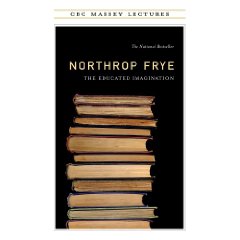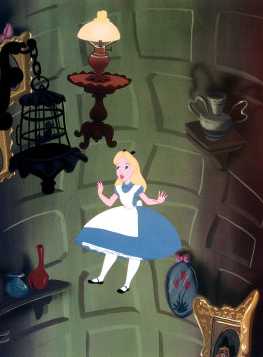
Tom Willard has generously given us permission to publish his study guide for The Educated Imagination, which he prepared for a freshman seminar back in the nineties and posted at his website; the page references are to the Indiana UP edition. Tom teaches in the department of English at the University of Arizona; you can visit his website, which features a beautiful photo of Frye taken by Tom’s wife.
Study Guide for The Educated Imagination
Northrop Frye (1912-1991) read his Massey Lectures over the Canadian Broadcasting Corporation (CBC radio) in 1962. First published by Indiana University Press in 1964, the six lectures present key concepts from Frye’s Anatomy of Criticism: Four Essays (Princeton University Press, 1957).
Chapter One. “The Motive for Metaphor.”
Frye begins by exploring the relation of language and literature. “What is the relation of English as the mother tongue to English as a literature?” he asks (p. 16), and before he can give an answer, he has to explain why people use words. He identifies three different uses of language, which he also terms types or levels of language.
1. “The language of consciousness or awareness” is our means of “self-expression,” our means of responding to the natural environment: “the world as it is.” This language produces conversation.
2. “The language of practical sense” is our means of “social participation,” our means of taking part in our civilization. This language produces information.
3. “The language of literature” is our means of entering the world of imagination: “the world we want to have.” This language produces poetry, first of all.Science and literature move in opposite directions. Science begins with the external world and adds imagination. (Mathematics is the imaginative language of science, Frye suggests in a later chapter.) Literature begins in the imaginative world and becomes involved in civilization.
Frye now deals with the distinctive feature of literary language. When language implies an identification of the speaker and the object, it becomes metaphoric. “The desire to associate,” and to find connections between inner experience and the external world, is what Wallace Stevens calls “The Motive for Metaphor.”
This chapter provides an introduction to the book. It raises questions that will not be answered until Frye has set out a general theory of literature. These include the question of education–“What is the place of the imagination … in the learning process?” (p. 16)–answered in chapter 5. They also include a series of questions about the social function of literature and literary education, to be answered in chapter 6:
“What good is the study of literature?” (p. 13)
“Does it help us to think more clearly, or feel more sensitively, or live a better life than we could without it?” (p. 13)
“What is the relation of English as the mother tongue to English as a literature?” (p. 16)
“What is the social value of the study of literature?” (p. 16)
What is “the relevance of literature in the world of today?” (p. 27)

